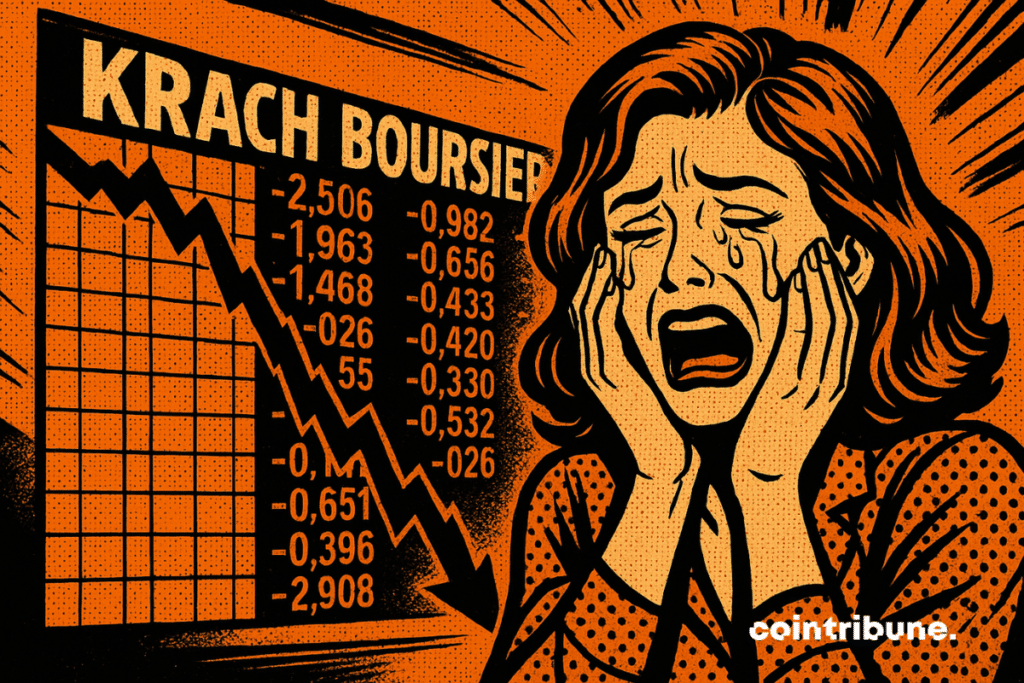$15 Trillion ETF Market Teeters—Is This the Pin That Pops It?
Wall Street’s favorite liquidity machine shows cracks as volatility spikes. Passive investing’s ’too big to fail’ mantra gets its first real stress test since 2020.
Behind the numbers: ETF assets ballooned 300% in a decade—fueled by zero rates and algorithmic trading. Now rising yields and redemption risks expose the plumbing.
The irony? The same institutions that mocked crypto’s volatility are now sitting on a derivatives time bomb. But sure, Bitcoin’s the unstable one.

In brief
- Major financial institutions (Goldman Sachs, Bank of America) predict annual returns of only 1 to 3% for the next decade.
- Global demographic aging and combined risks of inflation followed by deflation create an unfavorable macroeconomic environment.
- A nuanced strategy is necessary: passive management remains relevant for young investors, but older individuals should diversify with alternative approaches.
Are markets overvalued?
The Shiller CAPE indicator (Cyclically Adjusted Price-to-Earnings), a valuation measure that examines stock prices relative to average earnings over 10 years, is currently reaching alarming levels.
Historically, high values of this indicator have preceded periods of low returns, notably before theCurrently, the CAPE remains at levels close to those observed in 2021, suggesting a.
Major institutional players share this concern. Goldman Sachs and Black Rock predict annual returns of only 3% for the coming decade, while Bank of America anticipates between 0 and 1% per year. These projections sharply contrast with the performances investors have become accustomed to in recent years. Only Morgan Stanley remains moderately optimistic with a forecast of 7% annual returns.
This situation is all the more worrying as we observe an excessive market concentration on a few tech giants. The imbalance between the valuation of the 10 largest companies in the S&P 500 and the rest of the market dangerously recalls the situation preceding
The stock market does not always rise
The history of financial markets is marked bywhich many contemporary investors seem to have forgotten. Between 1966 and 1982, the Dow Jones stagnated for nearly. During the 1970s, the real annual average return on U.S. stocks was negative (-1.6%). The 2000s experienced even worse performance with an average of -3.5% per year.
The Japanese case is particularly interesting. Since the burst of its financial bubble in 1990, the Nikkei index tookto regain its previous levels. This prolonged period of deflation and stock market stagnation should serve as a warning to Western investors.
The belief that passive approaches will continue to deliver returns similar to those of the last decade now seems to rely more on faith than on rational analysis.
ETFs facing the demographic time bomb
Severalthreaten global growth in the years to come. Demographic aging is a major challenge: in developed countries, people over 50 hold 70% of significant wealth. However, these generations consume less and prepare for retirement, which weighs on overall demand.
Moreover, we could enter an unstable economic environment, oscillating between inflation and deflation. If the end of globalization and geopolitical tensions initially push prices up, a subsequent economic slowdown could lead to a deflationary spiral difficult to halt, as Japan has experienced.
We may be entering a new economic era characterized by more, instability, and uncertainty. These upheavals call into question the investment strategies that worked in the last fifteen years.
Beyond the “all ETF” approach
Faced with these challenges, a more nuanced investment approach is necessary. The relevance of the strategy strongly depends on age and investment horizon. For a young person in their 20s or 30s with several decades ahead, DCA (Dollar-Cost Averaging) on ETFs remains a valid method to start, even in an overvalued market.
Conversely, for people aged 40-50 who make up the majority of wealth holders, caution is required. These investors cannot afford to endure aas they approach retirement. They should therefore consider alternative approaches and build an.
Rather than investing blindly and regularly, it may be wise to wait for more favorable entry points when markets offer attractive valuations. This is precisely the strategy applied bywho currently holds over 300 billion dollars in cash waiting for better opportunities.
So, are ETFs dead?
Passive management and ETFs are not “dead” per se, but their effectiveness depends on the context. In a rapidly inflationary environment like that observed in Turkey, stock indices can serve as effective protection against currency devaluation.
urges us to adopt a balanced position. ETFs and DCA remain valuable tools within a global investment strategy, but they should not be the sole approach, especially in a potentially overvalued market.
The era of “all ETF” may be coming to an end, not because these instruments have lost their relevance, but because the economic context now demands more sophisticated and adaptive strategies. To navigate the next decade, investors will need to diversify with other asset classes such as bitcoin.
Maximize your Cointribune experience with our "Read to Earn" program! For every article you read, earn points and access exclusive rewards. Sign up now and start earning benefits.

